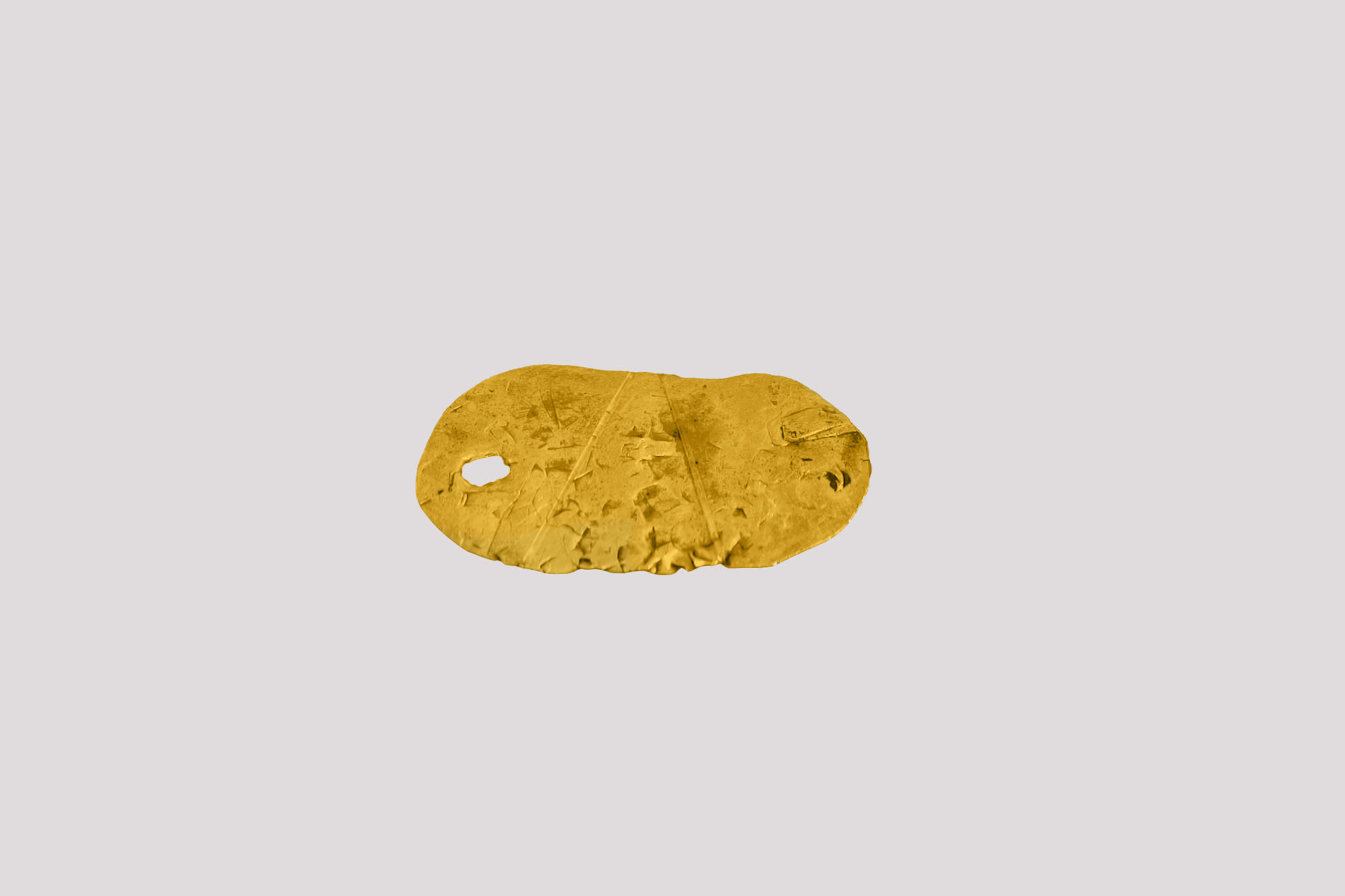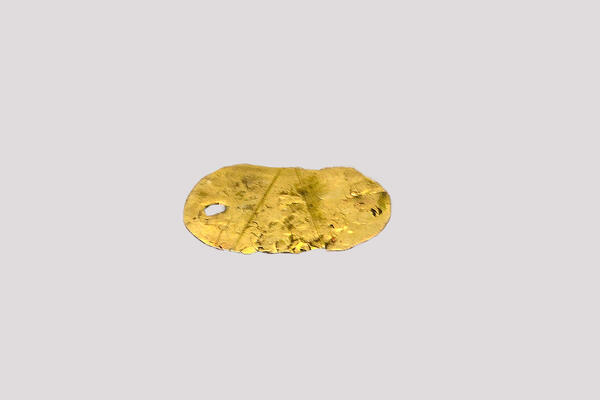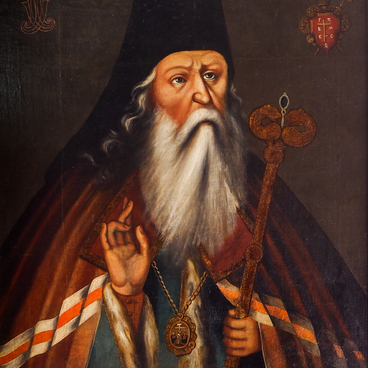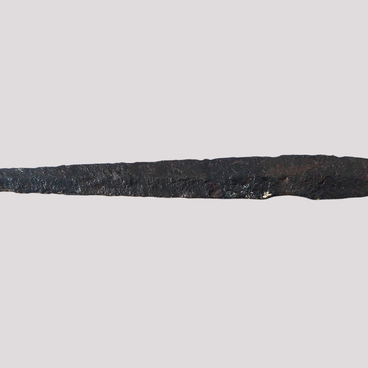The gold award kopeck is one of the oldest artifacts of the Smolensk State Museum-Reserve numismatic collection.
The turning points of the late 16th — early 17th centuries went down in history as the Time of Troubles. By 1610, significant territories of the Moscow state were under the control of the ‘Tushino thief’ — False Dmitry II, other impostors and the army of the Polish king Sigismund III. The depleted economy of the Muscovite state fell into complete decay, and administrative control over a significant part of the country was lost, the receipt of taxes in the form of an ordinary silver penny almost completely stopped. The mints lacked silver. Under these conditions, in May 1610, the government of Vasily Shuisky made an extraordinary decision to mint gold coins for money circulation. Gold jewelry and dishes were melted down. Thus, for the first time in the history of Russia, gold kopecks, half kopecks (‘dengas’), as well as large ‘Ugric’ coins were put into circulation along with the previous silver banknotes. The gold penny weighed about 0.7 grams, while the gold denga weighed about 0.35 grams
The first issue of gold coins had a ‘targeted’ purpose. In June 1610, the main forces of the Russian troops began to gather in Mozhaisk, together with units of the allied Swedes for a campaign to Smolensk, besieged by Sigismund III. A gold coin was issued to support this campaign; gold was intended primarily for Swedish mercenaries. However, the commander-in-chief, Prince Dmitry Ivanovich Shuisky, did not want to pay salaries to the Swedes and other mercenaries before the start of the campaign. The case ended in a catastrophic defeat for the Russian army.
After the fall of Shuisky, the release of gold kopecks was continued by the Poles who seized Moscow — on behalf of Prince Vladislav Zhigimontovich. One gold kopeck was equal to ten silver. It is known that this was very beneficial to the treasury, since the real rate was 1 to 9. The official circulation of gold kopecks endured for half a century after the Time of Troubles. There were not very many gold kopecks minted. Less than 50 copies are kept in museums and collections.
Two out of three gold kopecks in the Smolensk Museum collection have through holes. We can assume that these are the so-called award kopecks. These coins of the 16-17th centuries, as a rule, were not popular and were intended for royal awards, like the current award medals. Sotniks, who’s the rank corresponded to the current rank of captain, were awarded with golden kopecks. Russian military men usually sewed such golden insignia on the cap or sleeve of the caftan.
Unfortunately, the gold coins on display are highly deformed, and it is impossible to see the minted design.
The turning points of the late 16th — early 17th centuries went down in history as the Time of Troubles. By 1610, significant territories of the Moscow state were under the control of the ‘Tushino thief’ — False Dmitry II, other impostors and the army of the Polish king Sigismund III. The depleted economy of the Muscovite state fell into complete decay, and administrative control over a significant part of the country was lost, the receipt of taxes in the form of an ordinary silver penny almost completely stopped. The mints lacked silver. Under these conditions, in May 1610, the government of Vasily Shuisky made an extraordinary decision to mint gold coins for money circulation. Gold jewelry and dishes were melted down. Thus, for the first time in the history of Russia, gold kopecks, half kopecks (‘dengas’), as well as large ‘Ugric’ coins were put into circulation along with the previous silver banknotes. The gold penny weighed about 0.7 grams, while the gold denga weighed about 0.35 grams
The first issue of gold coins had a ‘targeted’ purpose. In June 1610, the main forces of the Russian troops began to gather in Mozhaisk, together with units of the allied Swedes for a campaign to Smolensk, besieged by Sigismund III. A gold coin was issued to support this campaign; gold was intended primarily for Swedish mercenaries. However, the commander-in-chief, Prince Dmitry Ivanovich Shuisky, did not want to pay salaries to the Swedes and other mercenaries before the start of the campaign. The case ended in a catastrophic defeat for the Russian army.
After the fall of Shuisky, the release of gold kopecks was continued by the Poles who seized Moscow — on behalf of Prince Vladislav Zhigimontovich. One gold kopeck was equal to ten silver. It is known that this was very beneficial to the treasury, since the real rate was 1 to 9. The official circulation of gold kopecks endured for half a century after the Time of Troubles. There were not very many gold kopecks minted. Less than 50 copies are kept in museums and collections.
Two out of three gold kopecks in the Smolensk Museum collection have through holes. We can assume that these are the so-called award kopecks. These coins of the 16-17th centuries, as a rule, were not popular and were intended for royal awards, like the current award medals. Sotniks, who’s the rank corresponded to the current rank of captain, were awarded with golden kopecks. Russian military men usually sewed such golden insignia on the cap or sleeve of the caftan.
Unfortunately, the gold coins on display are highly deformed, and it is impossible to see the minted design.



